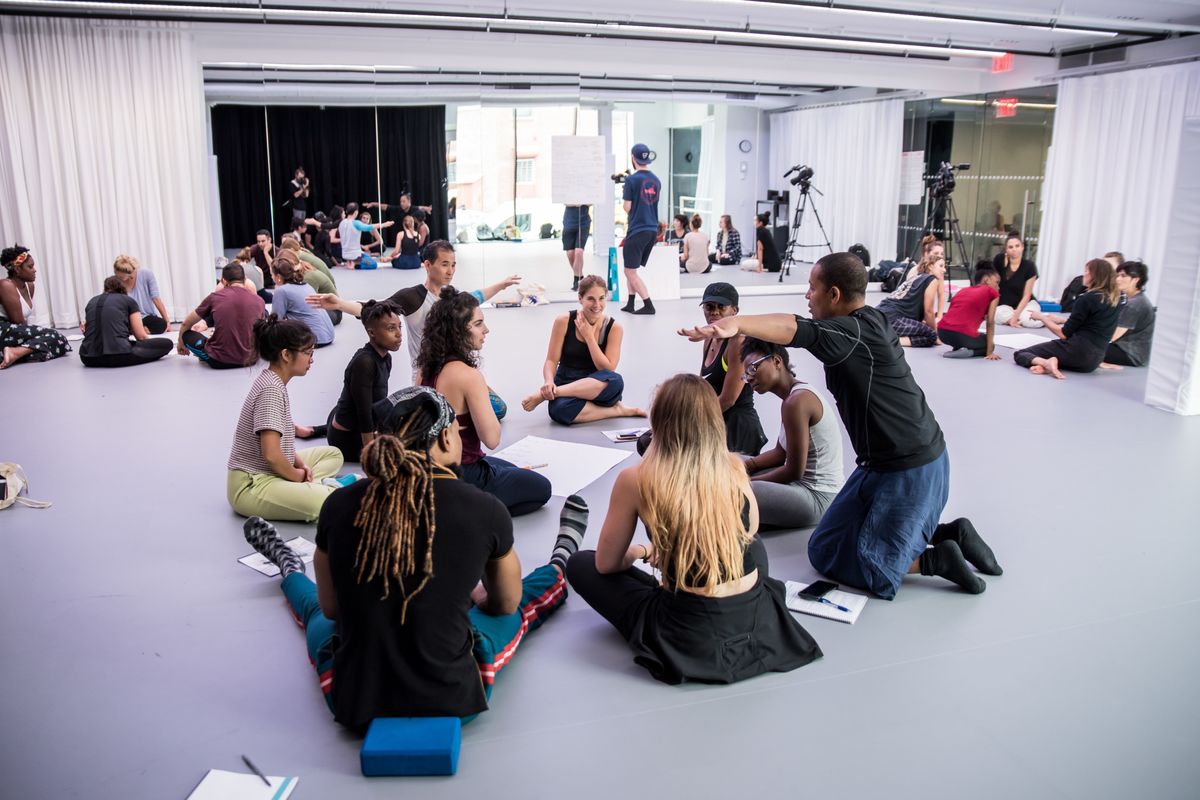
By now, most dance educators hopefully understand that they have a responsibility to address racism in the studio. But knowing that you need to be actively cultivating racial equity isn’t the same thing as knowing how to do so.
Of course, there’s no easy answer, and no perfect approach. As social justice advocate David King emphasized at a recent interactive webinar, “Cultivating Racial Equity in the Classroom,” this work is never-ending. The event, hosted by Dancewave (which just launched a new racial-equity curriculum) was a good starting point, though, and offered some helpful takeaways for dance educators committed to racial justice.
Racial equity work is ongoing.
King began his presentation with a powerful disclaimer: “I’m not a magical negro. I don’t have all the answers. I’m not going to have the answers to end racism in a two-hour webinar.” Workshops like Dancewave’s are important first steps, but they aren’t a one-off solution.
It includes examining your own biases and blind spots.
King pointed out that, as teachers, we are the gatekeepers of knowledge and should examine the ways in which we’ve been complicit with systemic racism. It can be as simple as taking notice of who you’re inclined to call on in class or as complicated as uprooting deep-seated organizational structures that promote inequity.
King urged educators to take a close look at who their organization has centered and who it has othered. Even something like language can be a barrier: He used the word “elite” as an example of a word that could be potentially exclusionary.
It requires continuous self-education.
Dance educators should also invest in their own personal anti-racism education. “Pursue learning opportunities. Seek new ideas that check your biases. Get out of an echo chamber,” said King.
In addition to attending events like Dancewave’s webinar, familiarize yourself with books such as How to Be an Antiracist, by Ibram X. Kendi, or Nyama McCarthy-Brown’s Dance Pedagogy for a Diverse World. King also recommended the following Instagram accounts: @sonyareneetaylor, @rachel.cargle, @browngirlcurator, @atabey.rev, @therealrynnstar, @thenapministry and @theconsciouskid.
It can be collaborative.
Having the opportunity to divide up in breakout rooms and connect with other workshop participants demonstrated that sometimes getting out of your echo chamber can mean simply talking to your fellow colleagues or even your students.
King suggested getting students involved in equity work by giving them a project that addresses a class, student or school need. If you choose to delve into sensitive territory with students, make sure there are support mechanisms in place for them.
It can be an embodied experience.
Dancewave’s workshop included movement activities, which provided an additional layer of fun and embodied understanding. To warm up, we had to respond to an action command, such as “jump,” with its opposite action, such as “crouch.” This exercise in challenging assumptions was surprisingly difficult, and would be great for K–12 students.
Later, we reconnected with our breakout groups to create short movement phrases based on implicit bias. The activity provided a visual component to a heady concept and inspired both an individual deep dive into our personal biases and a collaboration to create our final dance.
It should be specific to your students.
King encouraged educators to take a step back, look at how your students learn, and analyze whether what you’re bringing is actually relevant to them. For example, if the majority of your students’ only dance experience is with cultural social dances, consider inviting them to teach those dances to one another in groups rather than jumping right into pliés and tendus. King also encouraged giving students ownership of the class by inviting dialogue and investigation.
“Consider your curriculum, the artists you bring into the spaces and the leadership opportunities you bring to your students,” he said. “Are you bringing in people who look like the students you’re teaching or share their background? Be intentional about that.”




